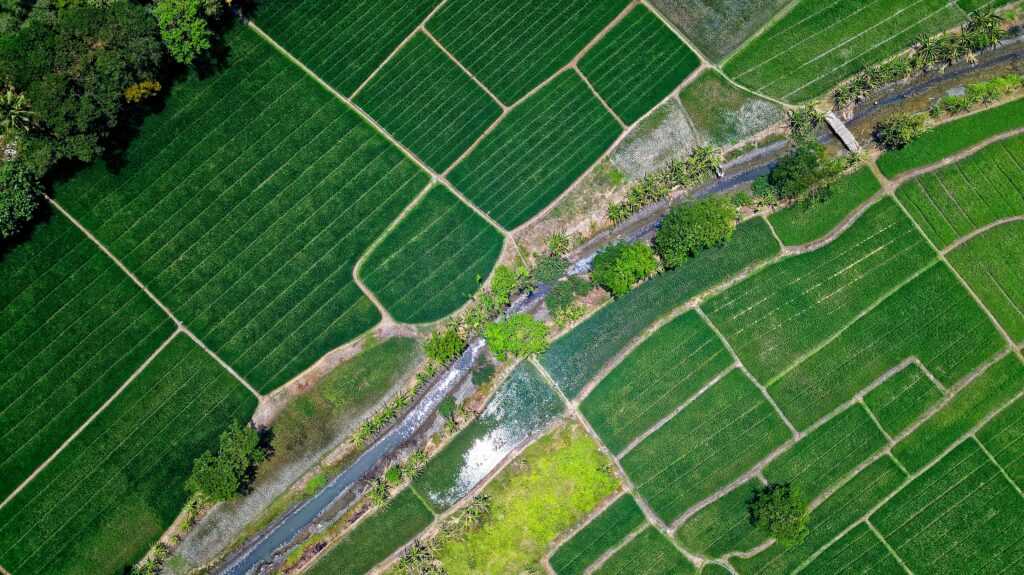Early in the morning on farms worldwide, farmers inspect their fields while tractors work nearby, stirring up dust from poor-quality soil. This common sight appears across countries and continents – modern farming takes nutrients and resources from the land but gives very little back to maintain soil health.
Agricultural systems require fundamental reconsideration. Farming approaches developed during the past century achieved remarkable success in one area – crop yields, but measuring success solely by the volume overlooks significant ecological costs.
Food production contributes around one-third of human-caused greenhouse gas emissions globally and most of it is caused directly by farming practices and agriculture, according to research published in Nature Food. Even less discussed are declining soil microbiomes, watershed contamination and biodiversity collapse surrounding agricultural lands.
Against this backdrop, farms scattered across the world are trying something different: they are growing food while also helping nature to recover and this is called regenerative agriculture.
H2: What Is Regenerative Agriculture?
What does “regenerative” actually mean for farming?
The term itself matters less than the actual practices, but let’s define it to frame the conversation. Regenerative farming refers to an approach focused on improving ecosystem health while producing food. Regenerative farmers don’t just grow food – they actively make their land healthier year after year.
Traditional “sustainable” farming methods try to do less harm to the environment, which is an important but not sufficient goal. Organic farming mainly has rules about what NOT to use – no fake pesticides, no lab-made fertilizers. Regenerative farming is different. It focuses on actions that actively heal and improve the land.
This isn’t a new trend. Indigenous communities across the world figured this out thousands of years ago. Before scientific papers and university degrees, these cultures developed smart ways to keep soil fertile and grow food without destroying the land. Many passed down farming wisdom through countless generations.
Today’s regenerative farmers use this traditional knowledge together with modern science. They’re not anti-technology – they’re just selective about which technologies and scientific understanding actually help build healthier farm ecosystems.
H2: The Problem with Current Farming Methods
Look across farming regions worldwide. California valleys, Brazilian cleared lands, Ukrainian wheat plains. They seem productive but hide a crucial problem.
The soil beneath is often dead, lacking beneficial microbes, good structure, and organic matter. Natural soil takes centuries to form, and industrial farming ruins it in decades.
As yields drop, farmers use more chemicals, creating dependency. Rain washes these into streams, damaging ecosystems. Weather grows more extreme – longer droughts, unpredictable rainfall, and heat waves that push crops beyond survival limits.
Industrial agriculture looks successful because it produces large harvests, but it undermines its own foundation. Chasing maximum yields today creates problems for tomorrow.
The emphasis on quantity over quality leads to oversupply in some markets, contributing to a staggering amount of food waste, much of it lost before it ever reaches the consumer.
There’s got to be a better way, right?
H2: Benefits of Regenerative Farming
H3: Capturing Carbon and Cooling the Climate
The carbon cycle deserves careful consideration. Through photosynthesis, plants naturally remove atmospheric carbon dioxide. The question is, where does this carbon end up afterward?
Conventional farming typically returns most captured carbon quickly to the atmosphere. Intensive tillage exposes soil organic matter to oxygen. Fields left bare between cash crops miss opportunities for carbon capture. Chemical fertilizers disrupt soil microbial communities that would otherwise stabilize carbon compounds.
Regenerative approaches fundamentally alter this equation. According to research, these practices facilitate substantial carbon sequestration within soil structures. Living roots maintain year-round carbon transfer into soil ecosystems. Minimal disturbance preserves this stored carbon. Cover crops expand photosynthesis beyond cash crop growing seasons.
This sequestration helps fight climate change while making farms more resistant to extreme weather.
H3: Rebuilding Soil Health
Soil doesn’t function like an inert growing medium. Recent research demonstrates how specific regenerative methods substantially enhance soil fertility metrics. Practices like diversified crop rotations, strategic cover cropping, and reduced tillage intensity create measurable improvements.
The benefits cascade throughout the agricultural system:
- Water infiltrates more effectively during rainfall events
- Soil retains moisture longer during dry periods
- Nutrient cycling increases through biological pathways
- Erosion decreases and soil structure improves
- Beneficial organisms flourish, suppressing pathogens
Plants grown within these improved conditions get nutrients more easily and handle stress better.
H3: Better Outcomes for Farmers
Economics matters tremendously in agricultural transitions. While initial conversion periods often require investment and learning curves, established regenerative systems typically operate with distinct financial advantages:
- Input costs decrease as biological processes replace chemical interventions
- Irrigation needs diminish thanks to improved moisture retention
- Machinery operation hours and fuel requirements drop with reduced tillage
- Crop failures during extreme weather events happen less frequently
- Premium market opportunities emerge through consumer recognition
Market recognition grows steadily for regenerative products. Forward-thinking food companies establish dedicated supply chains, offering price premiums for verifiable regenerative practices.
H2: Real Regenerative Farming Practices
No farm looks exactly like another. Soil types differ. Rain patterns vary. But across successful regenerative farms, certain practices keep showing up.
- Cover crops: Farmers plant cover crops after harvest. Why leave soil naked when it could grow something that builds fertility? Clover fixes nitrogen. Radishes break up compaction. Rye suppresses weeds. The next cash crop grows better because the soil stays alive during the off-season.
- Diverse crop rotations: Growing the same thing year after year invites trouble – pests build up, diseases take hold. Corn followed by soybeans followed by small grains with cover crops mixed in? That’s a different story. Each crop leaves the soil better for the next.
- Minimal soil disturbance: Many regenerative farmers park their plows. Each passage of heavy tillage equipment damages the soil structure built by roots, worms, and fungi. Less disturbance means more carbon stays put. Earthworms keep their homes. Moisture infiltrates better.
- Natural amendments: Instead of synthetic fertilizer bags, you’ll spot compost piles. Manure spreaders. Actively aerated compost teas brewing. These farmers feed the soil organisms first, knowing healthy soil feeds plants better than direct chemical applications ever could.
- Strategic livestock integration: Many farms bring livestock back to fields in careful sequences. Cows eat clover crops and leave manure. Later, chickens scatter the manure and eat bugs. This mimics natural grassland systems.
- Perennial plantings: Some farmers plant trees along field borders or in rows among crops. These deep-rooted plants pull up nutrients from below while sheltering wildlife and blocking wind.
The specifics shift from Vermont to California to Kansas to Florida. But the principle stays constant: work alongside nature’s processes rather than fighting them at every turn.
H2: The Path Forward
Farmers switching to regenerative methods face challenges – initial yield drops, knowledge gaps, and policies favoring industrial farming. Yet change still happens. Major food companies now seek regenerative suppliers. New financial tools help farmers through the transition, while peer networks share what works better than any textbook could.
When we buy from farmers’ markets or advocate for better policies, we speed up this shift. Regenerative farming links our plates to climate health by working alongside nature instead of battling it. These methods build resilience against extreme weather while keeping rural communities viable.
Farm fields cover a third of our land. Each regenerative acre stores carbon, shelters wildlife, and grows living soil – not tomorrow but today, using practical techniques that already work. This path needs everyone’s help. The way we grow food shapes more than landscapes – it determines what world we leave behind.


